From Dakar to Kayar
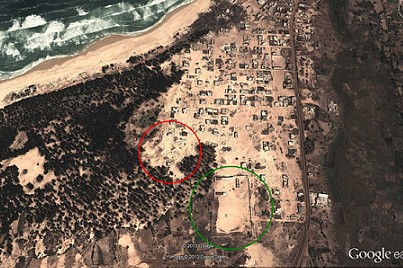
Yet the challenges for living sustainably in the coastal space and within renewable resources look set to require a lot of fresh thinking on how to accommodate often competing demands for space and resources.
Taking the situation in Kayar - the green circle on the Google map shows the location of the mid-level school (CEM) at the outskirts of town. The red circle marks the most recent encroachment of urbanisation that goes hand in hand with mostly illegal sand extraction.
This is gradually killing off the coastal forest, which stabilises the dunes and rich freshwater supplies. Kayar's location allowed it to draw on the natural wealth of the sea and, thanks to the freshwater, produce high value vegetables for nearby markets.
phocamaps view=map|id=1}
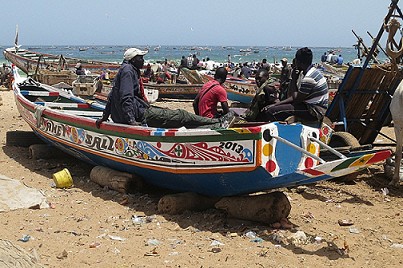
Vegetable growing - and thus land ownership and use - is regaining importance in response to the decline in the fishery, though it remains a major pillar of the local economy. WWF supported local efforts are also underway to help rebuild the degraded resource base through enforcement of a marine protected area. Abdoulaye Diop, national president of the Collective of Senegalese Artisanal Fishermen (CNPS) and based in Kayar, fully endorses and supports the efforts.
In many ways the town has prospered during the boom years of the fisheries as can be seen by the construction activities. It is 'catching up' as it becomes better connected to the rest of the country. That is a challenge to prevailing traditional Lebou culture and raises new questions about how to deal with changing expectations of youth when living conditions change.
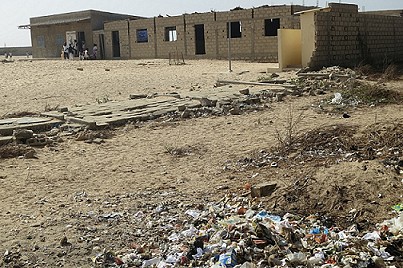
Kayar's sons who survived the treacherous emigration routes into Europe help economically with remittances to the lucky families and with new ideas, but others feel left behind.
How to acquire new knowledge and skills that are necessary in order to cope successfully with all the on-going change and be fit for the future? How to reign in the open transgressions of existing laws and regulations for the benefit of all town dwellers not only a select few?
The perceptions about the usefulness of formal schooling are shifting as a result. But the four primary schools can hardly cope with the large numbers of kids - up to 120 per class. Unsurprisingly, many kids don't make it to the end of primary schools despite the best efforts of the teachers. For those who do, Kayar offers only on mid level school (CEM) for further study. The CEM is seriously undersupplied with class rooms and all sorts of basic equipment. Furniture for the kids and teachers is incomplete and the lab equipment for more hands-on teaching of natural sciences is still a dream of the principal. Funds for investment in completing the basic infrastructure, including roofs and protective wall are desperately short. The school directors and teachers have their own take on the unsatisfactory conditions for all members of the school community and develop initiatves as best they can to bring about improvements. Abibou Diop, principal of the CEM has been lobbying relentlessly for improvements, with some success. But a lot still needs doing. It takes great strength to keep going despite the huge difficulties and they deserve recognition and support for that. Some highlights can be seen here.
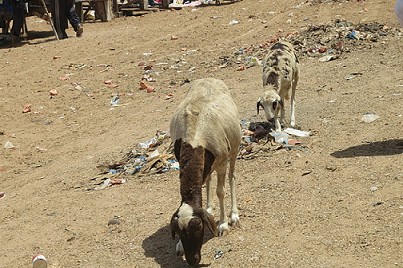
Garbage collection and treatment is another sour area. The unregulated dumps just outside the CEM and in the forest convey a sense of disregard for the town and reduce environmental quality. Much of the plastic will end up in the sea and contribute to the now global crisis of marine litter.
With goats roaming freely, it is unavoidable that they will ingest some of the plastic and other garbage, which may be unhealthy for themselves and the humans feasting on them at a later stage. The goats also contribute to spreading the garbage further.
At least in the occasion of World Environment Day, 5 May, the CEM and possibly other schools will engage again in a fantastic beach cleaning operation. Last year's was very successful.
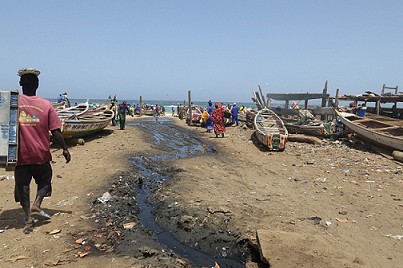
What about having world environment day every day of the year to make Kayar a most beautiful and colourful town?
One might even take care of the waste water that spoils part of the landing area.
Of course, organising such general services and maintaining them supposes that inhabitants themselves are not willing to put up such surroundings. It would mean changing some working habits and also finding ways to pay for such services.
Would the need for meeting sanitary standards for exported seafood and diversified economic activities create incentives to address the waste problem before it becomes a serious public health issue? Will the proud inhabitants of Kayar and their leaders find an effective solution soon?
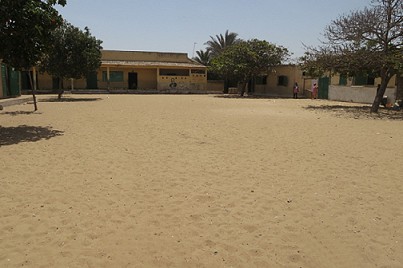
At the primary school Kayar 1 the director and the teachers take special care that the kids collect and separate garbage each day within the school yard and the classes to keep their learning environment clean.
It's a daily struggle because even if nobody at school would drop paper or garbage, the wind may swirl garbage around and collect it in corners. The daily effort pays off as the orderly facilities radiate a pleasant atmosphere.
The kids seemed to learn the lesson. We saw the result in the form of different sacks of garbage piled up in a wind-protected corner. One can only hope that final disposal is well ensured so as to ensure a positive learning outcome with a lasting commitment beyond the confines of the school area.
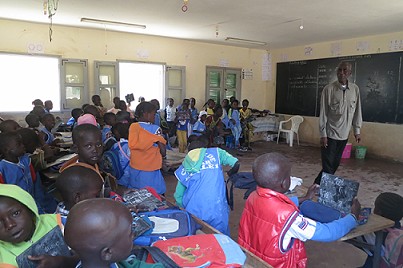
Visiting all classes one after another with Director Adama Ndiaye (see photo on the right), we also noted that the kids happily and competently answered questions asked by the director despite overcrowded class rooms.
Will they be the future leaders and innovators? There is no reason to doubt that.
Hitting the road again in direction of Saint Louis, we remain in thought about the different strategies to improve their lot we have criss-crossed in the different encounters: from seeking short-term advantages with little knowledge and concern for wider repercussions, when we caught a glimpse of urban encroachment and its early consequences to the longer-term investment in the kids to be better prepared for the future.








